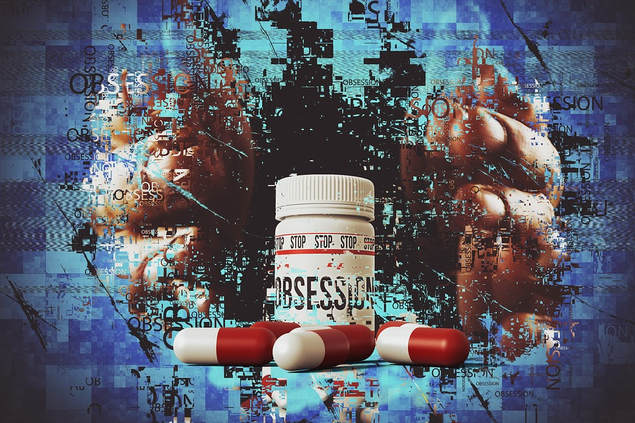OUR NATIONAL OBSESSION WITH OPIOIDS

“The United States has the highest rate of opioid use in the world, consuming 88% more prescription opioids per capita than second ranked Germany and seven times more than the United Kingdom. An average of 40 people die in the US every day from a prescription opioid overdose—a fourfold increase since 1999. Opioid use has been declared a public health emergency, with legally prescribed drugs contributing to substantial morbidity and mortality from addiction and overdose.”From the study being discussed today
Just last November we learned that the opioid problem accounts for 3% of our nations GDP or 500 billion dollars annually. There are so many stories / studies coming out daily concerning the OPIOD EPIDEMIC that it’s easy to tune out whenever you hear the subject mentioned. With all the scuttlebutt and scrutiny surrounding this issue, wouldn’t it make sense that at least on a clinical level we would be getting a handle on this problem? Apparently not.
A brand new study from Mayo Clinic and published in this month’s issue of the British Medical Journal (Trends in Opioid Use in Commercially Insured and Medicare Advantage Populations in 2007-16: A Retrospective Cohort Study) showed that not only is the opioid problem not getting better, it’s arguably getting worse — in some cases significantly worse.
In looking across almost every demographic group and insurer in the United States, the author’s conclusions were the same. “Opioid use and average daily dose have not substantially declined from their peaks, despite increased attention to opioid abuse and awareness of their risks.” Writing for The Hill last week (Study: Opioid Prescriptions in US Have Not Declined), Megan Keller put it this way…..
“The study found that from 2007 to 2016, annual opioid usage among commercially insured patients was at 14 percent. The quarterly prescription rate also held relatively steady for aged Medicare beneficiaries, increasing from 11 percent to 14 percent over the decade. Disabled Medicare beneficiaries, who had the highest rates of opioid use among those viewed in the study, saw a sharper increase, from 26 percent quarterly opioid use in 2007 to 39 percent in 2016. The average daily dose also increased. The Centers for Disease, Control and Prevention reports that 63,632 Americans died from drug overdoses in 2016 and attributed two-thirds of those deaths to opioids.”
The problem is that most people read something like this and think of opiod abusers as filling the profile of the average user of crack, meth, or heroin. Unfortunately, I’ve seen way too many ‘good’ people — solid citizens — get desperately hooked on these drugs (and THIS ONE as well).
And while many manage to break free, many others don’t, eventually becoming the statistics you just saw. But not before leaving a tsunami of despair, destruction and death in their path, both personal and financial. What’s our government — the very entity that created this epidemic in the first place (HERE) — doing to solve this problem?
The authors revealed that CMS (Centers for Medicare & Medicaid Services) has created a new policy where there are numerous hoops for patients, doctors, and pharmacists to jump through if they want insurance to pay for the prescription. However….. “the patient would be allowed to fill the full prescription as written if the patient is willing and able to pay in cash.”
I’m not making this up folks — the deciding factor is whether or not a person will pay for their opioids with cash, check, or credit card. Although it may come as a shock to many, opioids — particularly generic — are downright cheap when not purchased on the street (under 40 bucks cash, or less than half that with a coupon). Might there be a better way?
Before you email me or leave a comment about your unique situation, realize that I get it. I’ve seen people who’ve been burned, broken, crushed, and mangled by all manner of trauma and accidents; bedridden or incapacitated, and living every minute of every day with pain that could only be described as hellish. Yes, I very much realize that there is a time and a place for these sorts of drugs.
I also realize that when it comes to opioids, few classes of drugs reside on a steeper, more dangerous, and slipperier slope. The drug and dose that works to relieve your pain today isn’t going to be as effective tomorrow. It always takes more. It’s the very nature of any addiction.
On the flip side of this coin, I’ve seen people in terrible situations turn things around by making radical changes to their lifestyles. What kinds of changes? Depending on your unique situation, you may need to consult with your medical provider before making any changes. However, I’ve created a protocol to help people start removing some of the SYSTEMIC INFLAMMATION from their lives.
No; not every point is going to pertain to every person, and no; it’s not for everyone (some of you will require expert advice / treatment from FUNCTIONAL NEUROLOGISTS and FUNCTIONAL MEDICINE SPECIALISTS, but THIS POST will give you some ideas so that you can start formulating your own personalized EXIT STRATEGY — a blueprint for starting the process of taking your life back.
If you want to see what some of these “strategies” look like, HERE are links to a few of the case histories I’ve done for people as blog posts. And if you feel the free information provided on this site is helpful, be sure to get it in front of the people you love and care about most by liking, sharing, or following on FACEBOOK.
